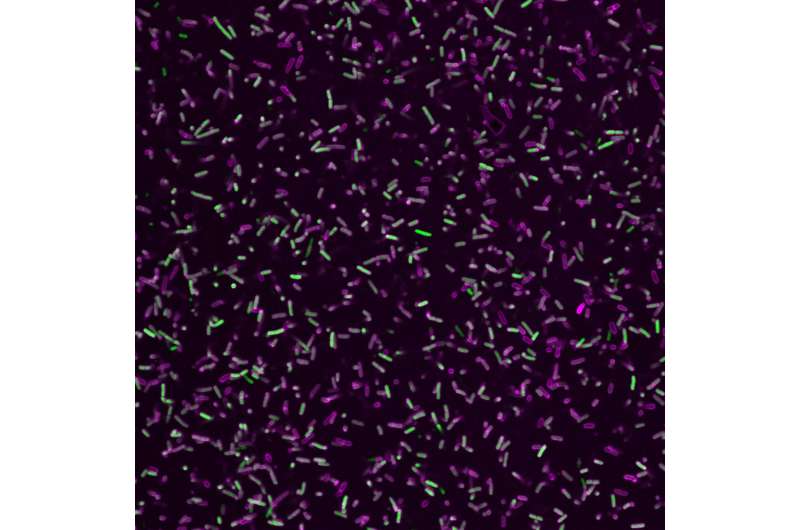This article has been reviewed according to Science X's editorial process and policies. Editors have highlighted the following attributes while ensuring the content's credibility:
fact-checked
peer-reviewed publication
trusted source
proofread
Team unravels activation mechanism of a protein that combats bacteria

The human immune system is constantly fending off a wide range of invaders—a feat that requires a diverse array of cellular troops and molecular weaponry. Although a great deal is already known about immune defense cells and the strategies they employ, many molecular details have remained elusive.
Now a research team led by Professor Oliver Daumke, a lab head at the Max Delbrück Center, has managed to unravel the main activation mechanism of GBP1, a protein that plays a pivotal role in combating certain bacteria.
They report in The EMBO Journal on how the protein adopts a special conformation that enables it to encapsulate the invaders, thereby neutralizing them.
"The findings help us to better understand the body's immune defenses—and in the future may allow us to stimulate them in a more targeted way," says Daumke.
A destructive protein coat
GBP1, short for guanylate-binding protein 1, is produced by the body's cells in response to an infection. It binds specifically to GTP, a nucleotide and chemical energy carrier within cells, where it orchestrates the defense against bacterial pathogens such as Salmonella and Shigella. In some cases, these may cause severe diarrhea.
Not only does GBP1 specifically activate the immune defense, it also forms a protein coat around the unwanted intruders. This destroys their membrane, making the bacteria vulnerable and preventing them from multiplying. Scientists had already known about this defense strategy, but the details of how it worked remained unclear, as did the central molecular switch in the GBP1 protein responsible for its activation.
The team used a high-resolution cryo-electron microscope, which allowed them to visualize the protein's three-dimensional structure, to investigate each step of this mechanism. "GBP1 is initially present as a single building block. When it is activated, it folds out like a Swiss army knife," explains the paper's first author, Marius Weismehl, a doctoral student in Daumke's lab.
"Thousands of these unfolded proteins then assemble into disks, which in turn stack into tubular structures," continues Weismehl. "These tubes finally attach to the bacterial membrane, where they reform and wrap around it like a coat." In this way, GBP1 proteins neutralize the invaders.
Uncovering the details of how these large protein structures are built was the main aim of the study. "Our microscopy data impressively show how GBP1 proteins stick to the membrane surfaces like pins and join together via their heads," says Professor Misha Kudryashev. He adds that these new findings are a crucial advance in elucidating the mechanistic functioning of GBP1.
"We have identified a molecular lever that plays a critical role in the first step of activation," says Weismehl. The protein uses the energy stored in GTP to control this lever and activate itself. This mechanism allows the protein to change its shape so that it can bind to other dimers and form a stable protein coat around bacteria. The researchers gained these insights by specifically altering certain sites in the protein, thus revealing the different functions they perform.
"Our results uncovered for the first time the sophisticated activation mechanism of GBP1, which results in the encapsulation of pathogens with an antimicrobial protein coat," summarizes Daumke.
In the future, according to Weismehl, it will be possible to look at how the GBP1 protein assemblies interact with other players in the immune response and thus trigger downstream signaling cascades.
The research team is optimistic that this fundamental knowledge of the human immune system will help better understand bacterial infectious diseases and inform new treatments that specifically enhance the immune response during infection.
More information: Marius Weismehl et al, Structural insights into the activation mechanism of antimicrobial GBP1, The EMBO Journal (2024). DOI: 10.1038/s44318-023-00023-y
Journal information: EMBO Journal
Provided by Max Delbrück Center for Molecular Medicine





















